Conifers in the landscape design of the summer cottage
Flower beds, green lawns, hedges and large single shrubs - the basis of landscape design. But everyone wants that in the winter season, when most plants bloom and lose their foliage, it is important that the landscaped area remains alive and attractive. This function is performed by coniferous compositions in landscape design and solitary evergreens. But some conifers do not get along next to each other and deciduous trees. To avoid annoying mistakes, professionals share their secrets with gardening lovers.

Coniferous composition in a summer cottage

Registration of a summer residence by coniferous plants
Content
What is important to know about coniferous compositions in landscape design
Flower beds and decorative perennials have long been used by gardeners in the landscaping of urban courtyards and suburban areas. Abroad, gardens and vegetable gardens have long been abandoned in favor of neat beds of decorative spicy greens and compact vegetable crops. In the East, for many centuries, the Japanese have been practicing the "rock garden" with sakura, red maple, wild grapes and undersized conifers. The culture of landscaping courtyards and thoughtful landscaping is actively taking root in our country.
The middle strip of Russia is the natural environment of many species of pine, larch, cedar and juniper. A little south, Mediterranean cypresses, thuja and other thermophilic evergreen tree-like conifers are perfectly cultivated. Surprisingly, in addition to blue spruce and some other pyramidal forms of this conifer, no other related plants were used. The exception was the resorts of the Crimea and the North Caucasus, where back in Soviet times, parks and alleys were decorated with rare species of evergreen forms.

Landscape design with conifers
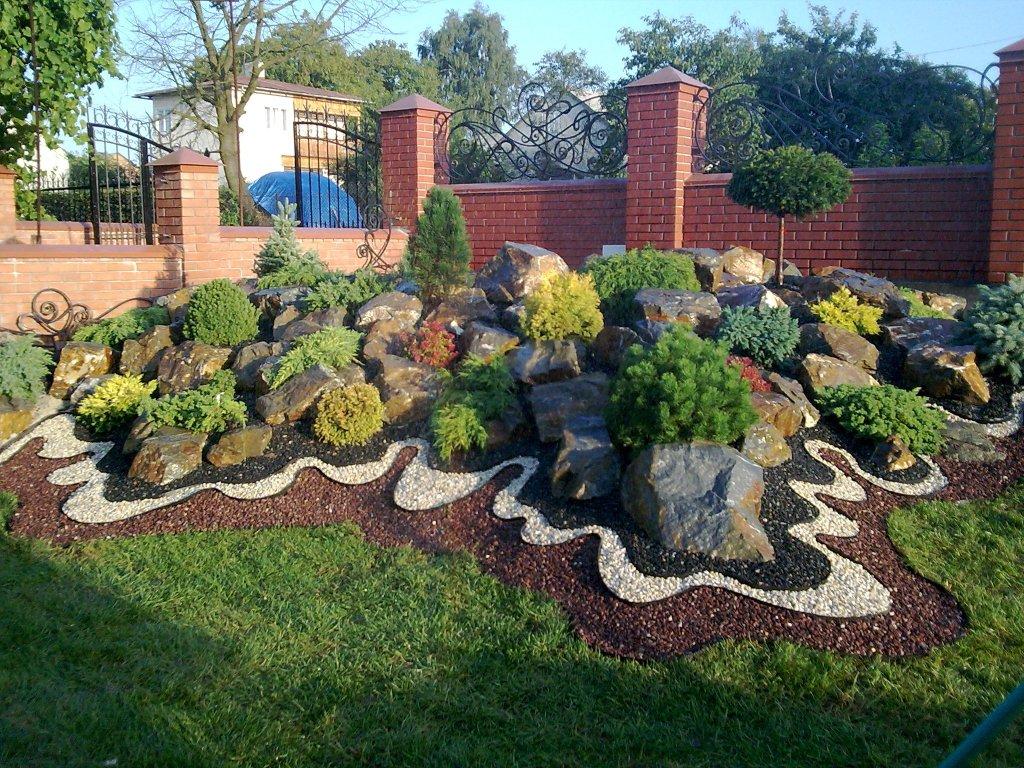
Landscape design in coniferous composition
Today, decorative forms of conifers are increasingly used in landscape design and landscaping of personal plots. Asian and Mediterranean forms, through the efforts of domestic and Dutch breeders, adapt to our climatic conditions. Although evergreen heat-loving plants are increasingly decorating our sites, many conifers from Italy, Korea and Japan need to sprinkle the roots with sawdust and wrap the crown for the winter, as in the photo.
It is very convenient to acquire cultivated compact forms for landscape design with coniferous compositions through catalogs and a specialized distribution network. Although in complex landscaping it is expensive, there are advantages:
- the seedling in a pot or tub is protected by the root system;
- each plant has a “passport” or brief care instructions;
- subject to recommendations for irrigation and cultivation, 100% rooting of a young conifer is guaranteed.
Attention! If a slightly yellowed one is offered at a point of sale from a number of identical plants, do not buy - this is the first sign of a seedling dying off! Even when planting in fertile soil and intensive irrigation, it will not be possible to reanimate it, with rare exceptions. Such material can be taken only for free - in addition to a batch of other plants, to plant somewhere near the edge.

Coniferous Cottage Design
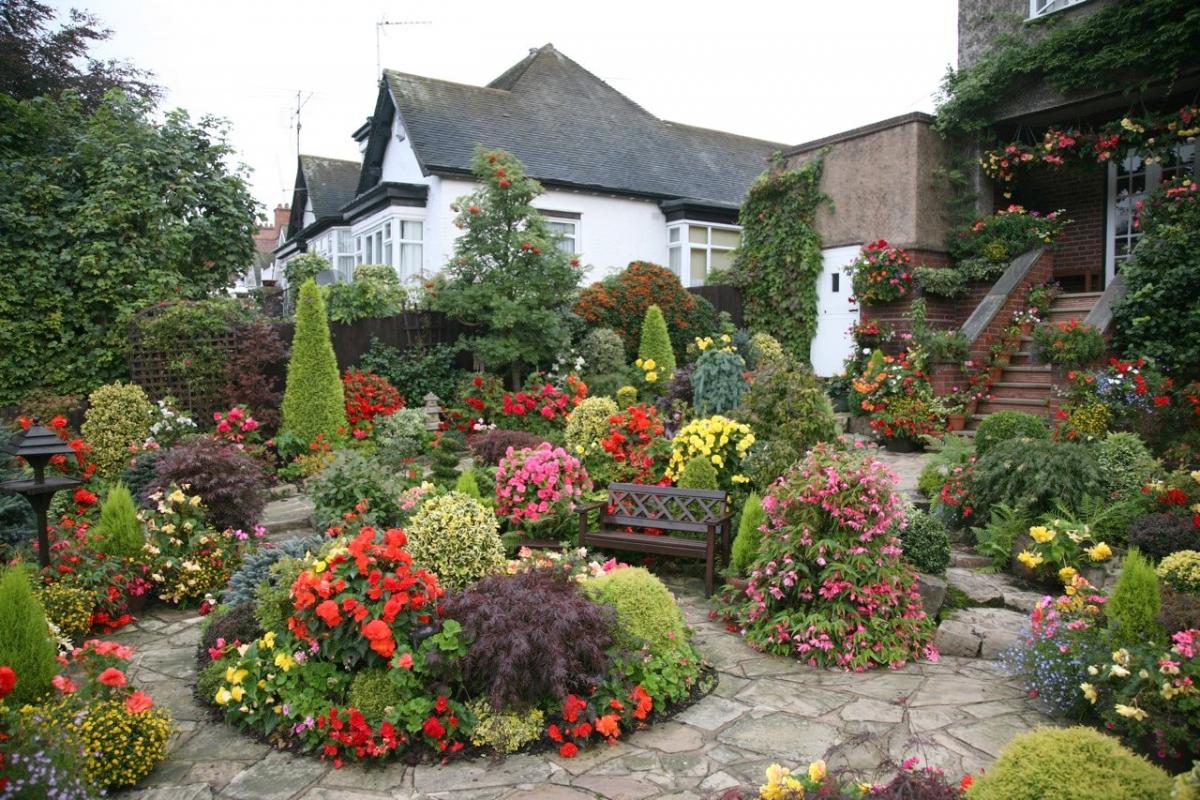
Coniferous composition in a summer cottage
If you are not sure that the acquired garden forms will take root, in the first year you can hire a professional gardener who will look after the "young". When the rooted thuja, juniper and decorative spruce overwinter and young, faintly colored twigs release in the spring - the signal that the conifers feel great in a new place and do not need careful care.
Tip. Do not forget that any tree-like plant during the period of active growth needs additional watering (especially in dry summers), top dressing and wrapping the crown during frosts.
Proper care and thoughtful planting of young evergreen seedlings in landscape design using conifers is a guarantee that the site will be beautiful at any time of the year. The main thing is that they do not shade each other and do not oppress less viable forms with their volatile. For example, near a single larch, other conifers do not coexist or gradually degrade.
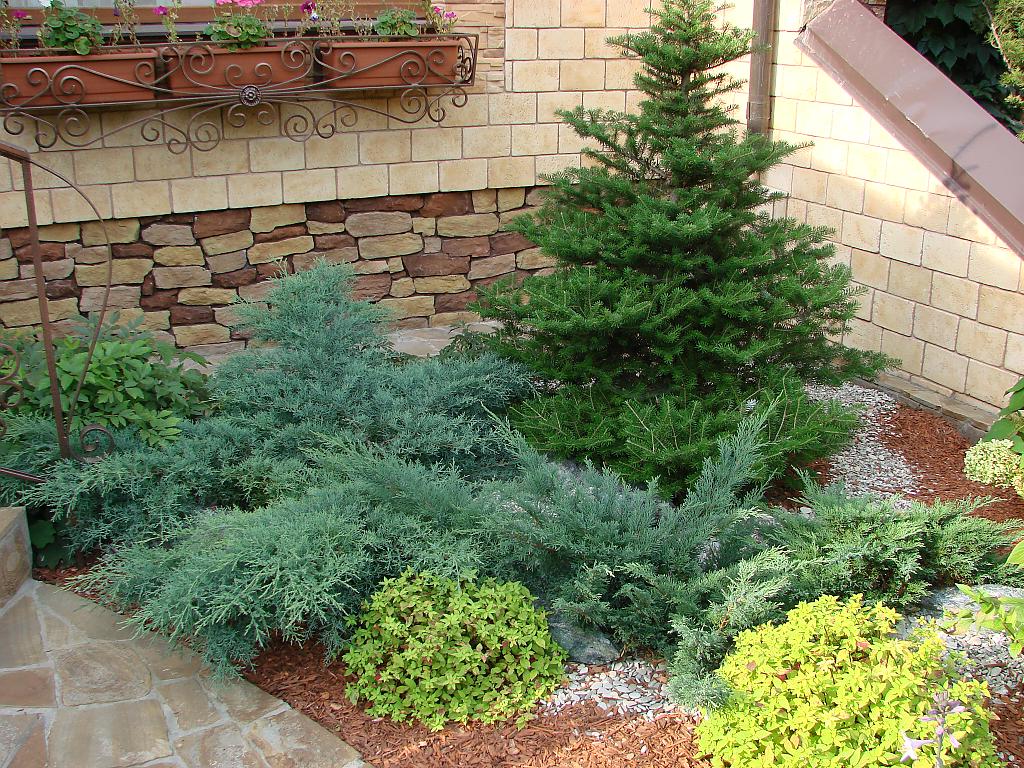
Registration of a summer residence by coniferous plants

Landscape design with conifers
It is desirable that the basis of the composition was a single tall or medium-sized plant surrounded by 2-3 coniferous forms of contrasting forms. A green lawn or small gravel is an excellent background for such a planting. It can be supplemented with compact flowering perennials or decorative fruiting shrubs, which can be annually adjusted by cropping.
Attention! Do not plant large conifers, fast-growing and spreading forms in the center of the site and under the windows of the building. Otherwise, after 5-6 years, they will turn into forest jungle, creating an excess shadow near a flower bed or front garden.
Several identical conifers should not be planted randomly, it is better to place them along the alley or as a hedge. Compact spruce or similar plants perfectly combine with weeping hardwood near an artificial pond on the edge of the garden, as in the photo.
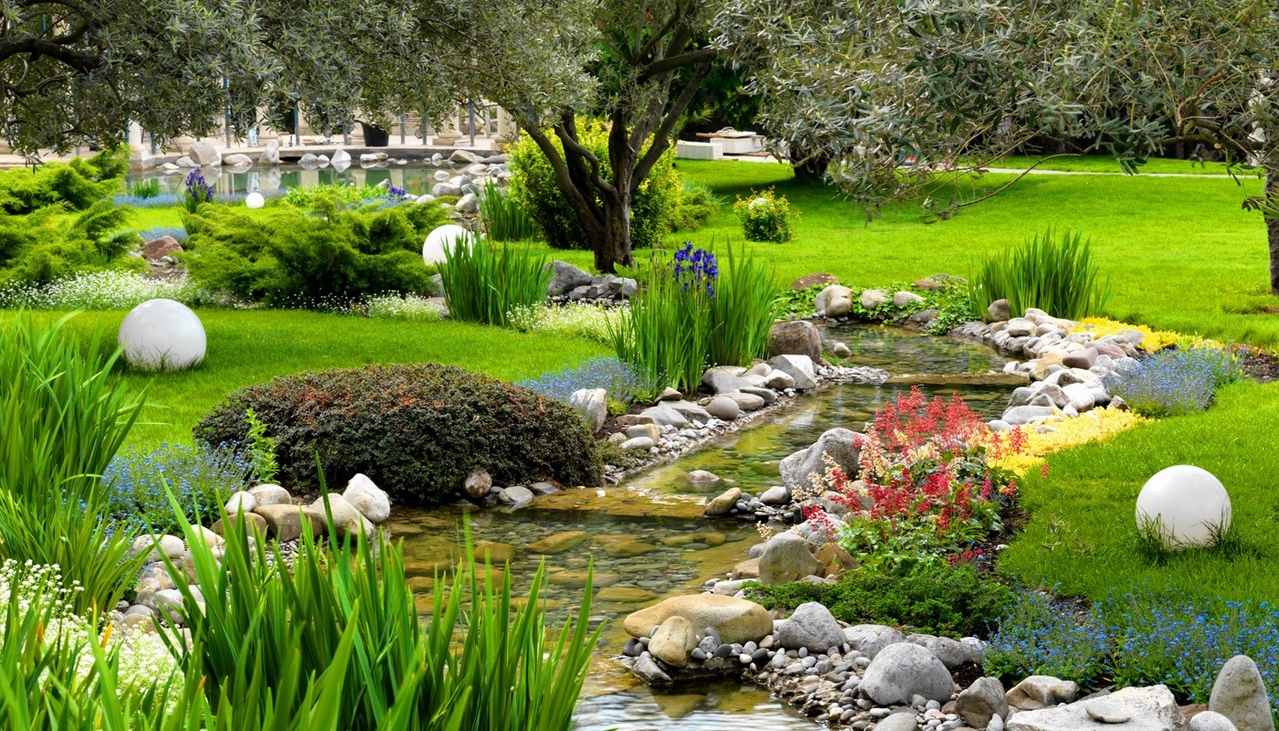
Landscape design in coniferous composition

Coniferous Cottage Design

Coniferous Cottage Design
Variations of conifers
For most people, conifers are Christmas trees and pines, which are customary to dress up on New Year's holidays. Siberian and Lebanese cedars are still ranked among them, and the inhabitants are not known how they differ. How the branches of larch, thuja, cypress or juniper look like - are lost in conjecture.
It is interesting. Each coniferous species has its own subspecies, with large variations in the color of cones or berries, the shape of the crown and the length of the needles. Italian weeping pines are the same pine trees, but the needles can reach 20-30 cm in length. And there are coniferous forms with large purple cones and small red cones resembling roses. Juniper with blue edible berries is used for landscaping dendroparks, and a variety with bright red fruits is poisonous. Young branches of decorative spruces can have light green, golden and blue hues, examples are in the photo.

Coniferous composition in a summer cottage

Registration of a summer residence by coniferous plants
Choosing coniferous compositions in landscape design, it is advisable to become more familiar with the species diversity of these relic plants. Botanists argue that coniferous or gymnospermous plants reigned in the time of dinosaurs, replacing the era of tree-like horsetails and ferns. But even they find it difficult to answer how many natural varieties and subspecies these representatives of the kingdom of flora and fauna have.
Scientists annually discover new endemic species in impenetrable virgin forests, which breeders use to breed decorative subspecies.

Landscape design with conifers

Landscape design in coniferous composition
The main classification of conifers in nurseries is according to the shape of the crown:
- spherical;
- ovoid
- spiral;
- sprawling flat-top;
- weeping;
- pyramidal;
- columnar;
- oval;
- creeping (flat);
- squat;
- rare crown.
The following forms are also distinguished:
- tall;
- medium-sized;
- undersized;
- creeping.
Attention! Over time, undersized plants will look like mid-sized, dwarf and compact conifers will take up more space. Do not plant them densely so as not to spoil the original plan in landscape design.

Coniferous Cottage Design

Coniferous composition in a summer cottage
How to make compositions?
Conifers are quite unique, in many respects, plants. They rarely get sick and are attacked by pests, endure the vagaries of the weather. Most of them do not require special fertile soil, although each species has its own preferences. Some drop needles like larch, others bloom pink in landscape design, like the Crimean thuja. All these forms are classified as evergreens, and most purify the air, filling it with volatile, destructive for pathogenic microflora. Compact trees, densely covered with needles, are quite effective in single plantings, and in general composition with other "neighbors", as in the photo.

Registration of a summer residence by coniferous plants

Landscape design with conifers
The design of the site is usually divided into several zones, where in the center of the composition there will be certain types of plants. Depending on the purposes, according to the catalog or in the garden supermarket, you can choose or order different conifers. Most often they offer compact, dwarf and undersized forms.
Attention! Any variety of pine, spruce, fir, cedar, larch, arborvitae, cypress or juniper can be selected to your taste. But there is one condition - they must be adapted and acclimatized to a specific region. Not all of them are organically perceived in the neighborhood of decorative and fruiting trees and shrubs.
Most evergreen forest beauties are in harmony with those trees and shrubs that are usually adjacent to in the wild. These are oaks and birch, maples and mountain ash, hawthorn and wild rose.
Attention! It’s not worth planting several conifers from different geographical zones at once, it often looks unnatural.
"Northerners" can oppress their phytoncides with stunted and dwarf forms native to the Mediterranean and the Far Eastern region. And selective and hybrid forms will be oppressed by their natural relatives. Lebanese cedars and Siberian larches are considered the most “unsociable”.

Coniferous Cottage Design

Coniferous composition in a summer cottage
Gardeners noticed that most evergreen representatives feel great in the shade, so they are planted behind the house on the north side. However, this does not apply to Mediterranean endemic species and species of fir-trees with light needles, which fade in the shade.
Cones are a natural dining room for many wild birds that willingly flock to the site in winter and late autumn, filling the yard with joyful twittering. However, natural fertilizer after treating with seeds can spoil the appearance of a well-groomed coniferous composition in landscape design.
Most cultured forms lend themselves well to “haircut”, they can be given the most bizarre shape - from elephants to precise spirals. But some conifers are sick, even if one branch is broken.
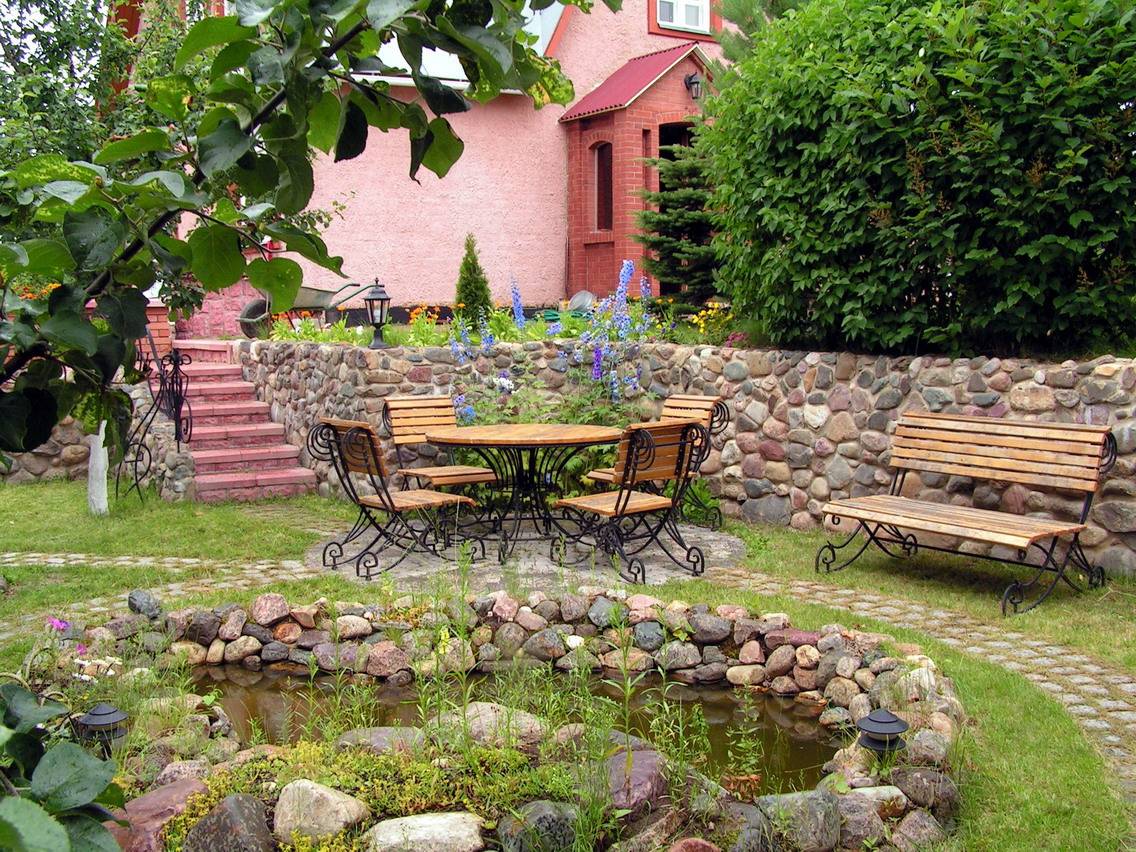
Registration of a summer residence by coniferous plants

Landscape design with conifers

Landscape design in coniferous composition
If you want to ennoble the infield with evergreen sculptures, you need to choose the right thick forms with small twigs and short needles. You will also have to deal with the search for specialists who create real masterpieces. Do not experiment with living plants if you are not sure that you can do such “creations”.
Carefully review the examples in our photo gallery.Perhaps these ideas will inspire and suggest a new design concept for your site.
Video: How to use conifers in landscaping

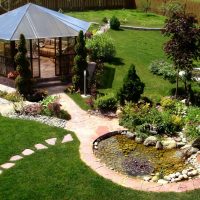
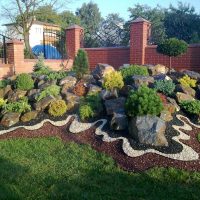


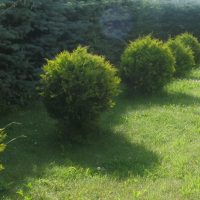





















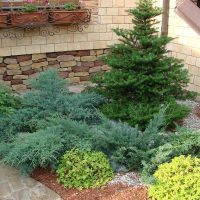
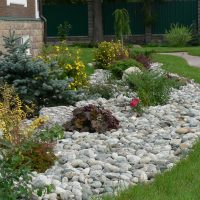









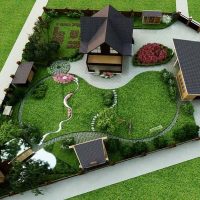




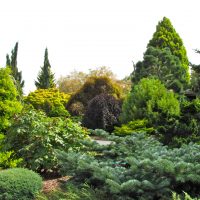









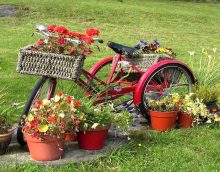

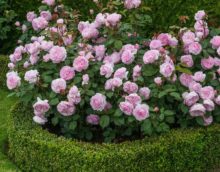

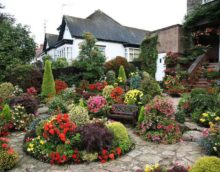







Planting adjustment required
What can be planted next to thuja which conifers and which flowering shrubs?
Hello Alina! I have conifers on my site: western thuja, 2 spherical, Canadian spruce, mountain pine, 4 different junipers, fir, blue spruce, 2 spruce (they are still small). Many flower perennials: hosts, lilies, hydrangeas, daylilies, roses, peonies. I'd like to arrange them correctly and beautifully. I read, watch, but nothing happens. Help!
Hello! Please help me create a corner of conifers, measuring 2 meters by 4 meters. I live in Kemerovo.